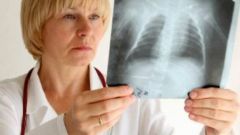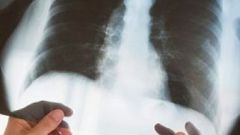Instruction
1
Of all the varieties of pneumonia are the most common croupous (equity) and focal (bronchopneumonia).
Lobar causing bacteria – pneumococci that can inhabit the mouth and upper respiratory tract in a healthy person, but only when related factors (hypothermia, decreased immunity) may develop the disease. This pneumonia is characterized by the occurrence in the cold season and the defeat at the development of the disease a considerable part, sometimes the entire lung.
Lobar causing bacteria – pneumococci that can inhabit the mouth and upper respiratory tract in a healthy person, but only when related factors (hypothermia, decreased immunity) may develop the disease. This pneumonia is characterized by the occurrence in the cold season and the defeat at the development of the disease a considerable part, sometimes the entire lung.
2
The symptoms of lobar pneumonia:
• beginning may resemble a bad cold with a sharp rise in temperature to 39 - 40 degrees with chills;
• there is a dry and frequent cough;
• flank pain becomes severe and aggravated by coughing, sneezing and even breathing in;
• these symptoms associated shortness of breath, breathing becomes frequent and superficial;
• the specific feature of pneumonia is the appearance on the cheek of the blush from the side of the affected lung;
• often on the lips and the nostrils appear small vesicular rash (herpes);
• 2 - 3 day after beginning of disease a cough starts the secretion of viscous mucus, brownish-rusty color;
• in addition to the other signs, there is little urine of dark color. Diagnosis usually reveals the presence of protein;
• often occurs defeat of the cardiovascular system, Central nervous system (severe headaches, restlessness);
• I lose my appetite, and tongue coated brownish-white bloom;
• in severe cases may develop pulmonary edema.
7 - 8th day after onset of illness there comes sharp improvement, with restoration of temperature.
• beginning may resemble a bad cold with a sharp rise in temperature to 39 - 40 degrees with chills;
• there is a dry and frequent cough;
• flank pain becomes severe and aggravated by coughing, sneezing and even breathing in;
• these symptoms associated shortness of breath, breathing becomes frequent and superficial;
• the specific feature of pneumonia is the appearance on the cheek of the blush from the side of the affected lung;
• often on the lips and the nostrils appear small vesicular rash (herpes);
• 2 - 3 day after beginning of disease a cough starts the secretion of viscous mucus, brownish-rusty color;
• in addition to the other signs, there is little urine of dark color. Diagnosis usually reveals the presence of protein;
• often occurs defeat of the cardiovascular system, Central nervous system (severe headaches, restlessness);
• I lose my appetite, and tongue coated brownish-white bloom;
• in severe cases may develop pulmonary edema.
7 - 8th day after onset of illness there comes sharp improvement, with restoration of temperature.
3
Unlike lobar pneumonia, focal affects individual regions of the lung (single or multiple). The damage to the lung tissue contributes to the spread of inflammation from the bronchi and bronchioles. Most often patchy pneumonia occurs as a complication of influenza, bronchitis, measles, whooping cough, and other infections. Stagnation of blood in lungs in supine patients, postoperative period, reduced immunity, inhalation of toxic fumes can also cause this type of pneumonia.
4
Symptoms of focal pneumonia:
• onset may be gradual, with a slight fever;
• paroxysmal cough is usually accompanied by purulent sputum;
• the disease can subside and appear with a new force, forming new foci of inflammation.
• onset may be gradual, with a slight fever;
• paroxysmal cough is usually accompanied by purulent sputum;
• the disease can subside and appear with a new force, forming new foci of inflammation.
5
Often, this form of pneumonia becomes chronic due to improper diagnosis or lack of care. Pneumonia treatment is carried out in hospital under medical supervision. Modern methods of drug therapy can reduce disease and prevent mortality, which can only be in incorrect or delayed treatment.






